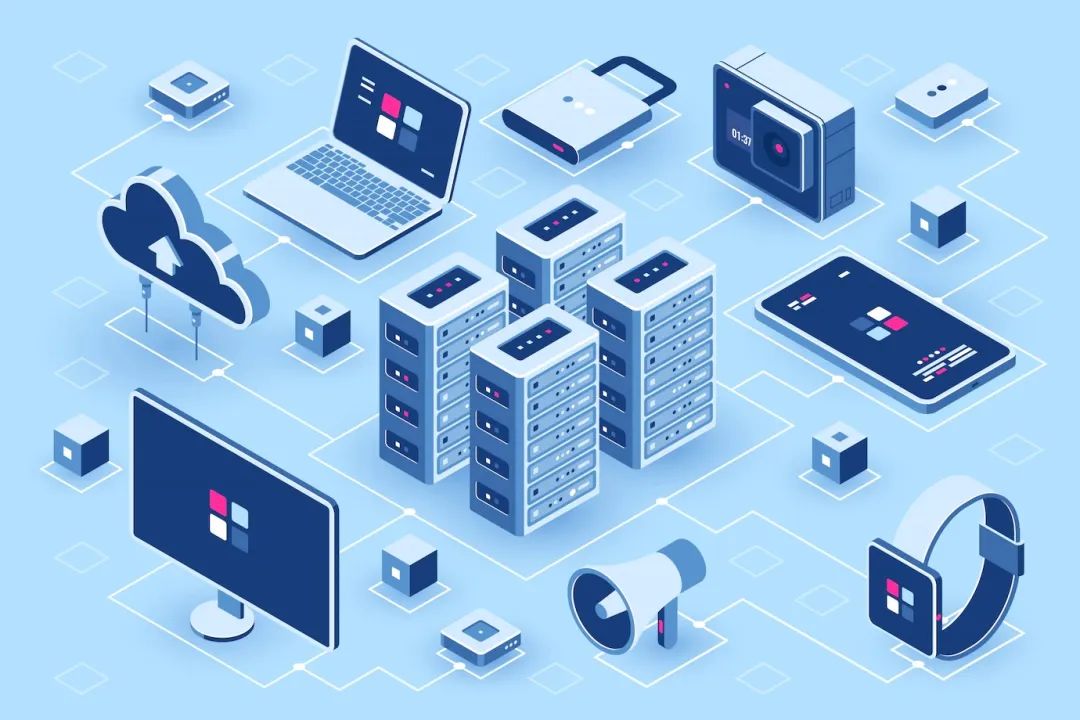The development of the combination of trusted technology
and embedded chips in the intelligent terminal of the energy and power industry
In recent years, with the successful application of a new generation of information technology represented by the Internet of Things (IoT), cloud computing, big data, artificial intelligence, etc. in the Internet industry, more and more traditional industries have gradually merged with Internet technology. A new round of global technological revolution and industrial transformation is thriving. Similarly, the electric power industry, as an important basic industry related to the national economy and people’s livelihood, is also gradually undergoing changes.

The characteristics of informatization, automation, and interaction of the smart grid determine that traditional power grids need to integrate with advanced IoT technologies at various stages. The realization of the goal of fully sensing the state of the power grid will inevitably mean the widespread application of IoT technology in the power grid. With the rapid growth in the number of power grid terminal devices, there are increasingly severe security challenges.
The large number of terminal device nodes, wide deployment range, and uncontrollable physical environment make them vulnerable to physical hijacking, node replication, signal interception, theft and replay, and man-in-the-middle attacks. In addition, the current network security defense system based on depth defense has problems of single-point failure and performance bottleneck caused by centralized authentication, making it difficult to meet higher management requirements. Therefore, new authentication methods need to be designed to enhance the control ability of power grid terminal devices.
In conjunction with the business security requirements of the intelligent electric power IoT “cloud-edge management”, the development of a unified security protection program and technical management measures to ensure that the power industry to meet the relevant business application needs and security protection requirements, comprehensive support for intelligent power IoT construction and technology evolution.
The decentralized IoT terminal security authentication system based on blockchain technology can solve the problems of single point failure, performance bottleneck, and terminal management brought about by centralized authentication in traditional IoT. It empowers the network infrastructure from the bottom-up and adapts to the future business development of the IoT network, meeting the increasingly high requirements for frequency, complexity, and timeliness of information exchange between various entities in the IoT.

With the in-depth development of power IoT, the traditional centralized network architecture no longer meets the needs of ubiquitous IoT. With the growth of the number of edge-side accesses, the pressure on cloud computing and storage, link communication grows exponentially, and there are also secondary issues such as data security that are becoming more and more prominent. Edge computing (cloud-side collaboration) and other technologies are emerging in this context.
Edge computing on the IoT requires support from chip technologies such as edge-side IoT and computing. As the core of the edge computing platform, embedded System on Chip (SoC) chips are the fundamental basis for the development of edge computing in the electric power IoT. Currently, SoC chips mainly use the ARM architecture, which is widely used in mobile and embedded fields and has a complete application ecology. However, after years of development, the instruction set architecture of ARM-based SoC chips has become extremely complex and redundant, with high patent costs and architecture authorization issues. Meanwhile, the complex and ever-changing international political situation has made the application of SoC chips more challenging. Therefore, adapting secure and controllable SoC chips has become an urgent task for the development of the electric power IoT, which is a national infrastructure lifeline. In addition to rich functionality, outstanding performance, and low cost, SoC chips also need to achieve absolute self-reliance and controllability; otherwise, they will be constrained by others due to the “neck-tying” of core SoC chips. In this context, adopting a new generation of independent and controllable SoC chips that are tailored for edge computing applications in the electric power IoT is inevitable.

For the application of intelligent power distribution IoT, with the microprocessor based on RISC-V instruction set architecture as the core, and various forms of co-processing units such as GPU, Crypto Engine and NPU are integrated to meet the ubiquitous, security and intelligence-oriented, custom development of power edge underlying software and hardware platform is one of the current paths to build reliable and efficient power intelligent IoT edge-end devices.
The NB series SoC products designed and developed by LeapFive Technology are mainly used in smart energy, smart logistics, smart factories, smart cities, etc. In August 2022, LeapFive Technology released the NB2 chip product, which features high computing power, high performance, high integration, and high reliability. The processor is equipped with quad-core 64-bit RISC-V cores, using 12nm advanced technology, and a variety of built-in hardware acceleration engines, including 3DGPU, 4TOPS computing power NPU, independent image, audio, and data processing engines, etc. It can meet various needs such as edge computing, deep learning, machine vision and voice processing, and can precisely target power edge intelligence applications. At the same time, the underlying security features of NB series SoC products, such as secure boot, encryption and decryption engines, and trusted execution environment, can also form the underlying hardware foundation support for security applications.
Currently, the intersection between blockchain and the IoT mainly lies in the cloud, where IoT data is collected from devices and then uploaded to the blockchain through software methods. However, if the hardware underlying IoT terminal devices has not yet deployed trusted data uploading capabilities, the data generated from the source of terminal devices may still be at risk of tampering. Therefore, to fundamentally solve the problems of data trust and secure traceability, it is necessary to start from the data source of intelligent sensing devices and build a basic platform that supports trusted collection and blockchain-based traceability features at the hardware and software levels. This is also the core goal and key to building hardware and software integration devices.
Trusted IoT terminal devices must be able to effectively reduce security risks through hardware and software integration in the form of hardware-level data trustworthiness together with blockchain consensus trust mechanism, and ultimately achieve a closed-loop business based on blockchain consensus trust mechanism. To truly achieve a higher degree of whole-process data on the chain, it is necessary to deploy credible data on the chain capability in the bottom layer of terminal device hardware through the combination of software and hardware, to open the key link of blockchain + IoT and realize the chain from the source of data. Relying on the underlying hardware platform based on autonomous controllable chips, the trustworthiness of the data source can be effectively ensured from the underlying hardware level by using its differentiated customized resources or features for security, encryption, and decryption, blockchain computing, etc. At the same time, for the relevant underlying hardware resources and features, adapt the hierarchical SDK software stack from driver to middleware, so as to balance the universality, ease of use, and even relevance of software security functions, thus building a hardware and software fusion device foundation platform for power intelligent IOT applications together with the hardware platform based on the autonomous controllable chip, and thus empowering the power industry to accelerate the evolution of interconnection, security, and intelligence.
